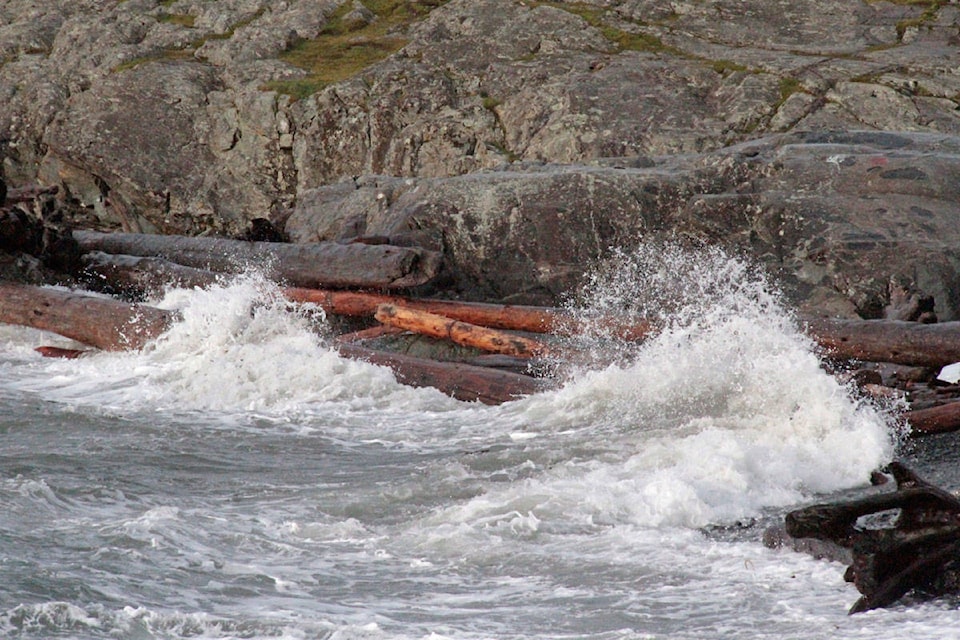In the Okanagan Valley, summer winds are predictable.
The south wind blows up the valley. The north wind blows down the valley — “up” and “down” depending on how you orient a map because a lake surface has no up or down.
In spring and fall, we also have west winds, which ride over the Coast Mountains and gather speed as they whoosh down the slopes to the lake.
They hit the lake like a physical punch. The lake reels. Its surface darkens. Waves form long lines of foaming combers, marching in formation across the lake.
I’ve often wondered what’s happening at the front of the gust, at its intersection with the existing airflow.
Does the gust drive under the still air, like an oceanic plate subducting beneath a continental plate, in tectonic geology? If so, does it cause air-quakes?
Or does the active gust simply bulldoze the existing air mass ahead of it? If so, why doesn’t the pushed air also stir up waves?
One clear cloudless day last spring, I learned that winds are even more complicated than I had assumed. From my vantage point on a trail high up the side of the valley, I could look down on some of these gusts.
The gusts themselves were not uniform.
The prevailing wind created those long lines of white-capped waves. But within that pattern, I saw patches of extreme turbulence where winds whipped the whole surface into a froth. And within those patches, there were whirlwinds – on land, we might call them dust devils, but much stronger on the water. They were like mini-tornadoes, except that they didn’t connect to any storm clouds overhead.
They lashed the surface with such ferocity that spray rose high into the air.
The whirlwinds always started within the turbulent patches. But then they moved around on their own. Sometimes just within the patch. Sometimes beyond it, on their own, out into the more normal wind flow.
All done by utterly invisible forces.
I can see the effect; I can’t see what’s doing it.
It gives me a renewed appreciation for biblical metaphors about wind.
Elijah hid in a cave while a mighty wind battered the mountain. A wind blew the waters of the Red Sea aside so that the Israelites could cross to safety. A wind put flesh onto Ezekiel’s valley of dry bones. A rushing wind struck the disciples at Pentecost.
Jesus told Nicodemus: “The wind blows where it chooses. You can hear its sound, but you cannot know where it comes from or where it goes.”
Ancient Hebrew used the same word for “wind” as for “breath” and for “spirit” – ruach. So did first-century Greek – pneuma.
The mixed meanings drive home the metaphor. You can’t see wind, breath, or spirit; you can only see the effect.
So some translations say that in the very beginning, a mighty wind moved on the waters of Creation. Others say that the Spirit of God moved on the waters. And the “breath of life” that God put into Adam and Eve could equally be God’s spirit.
Watching the way something invisible can stir up the lake helps me understand the way something invisible can stir up a person.
Jim Taylor lives in Lake Country.
rewrite@shaw.ca
